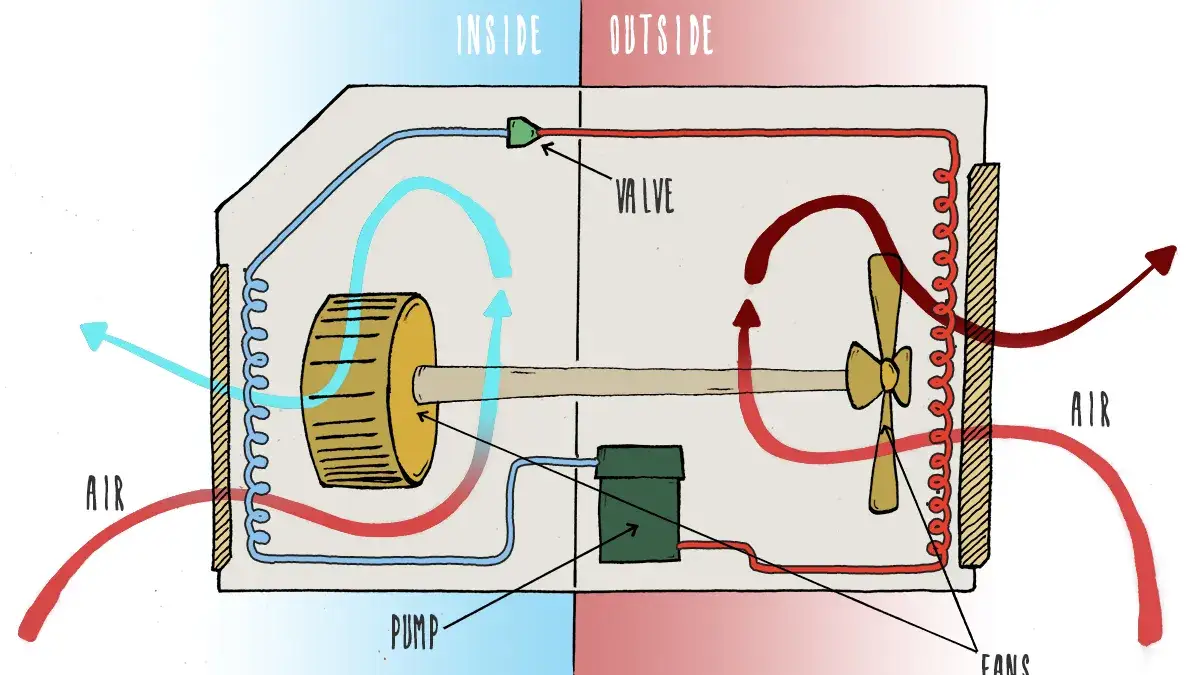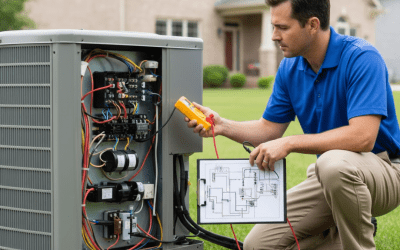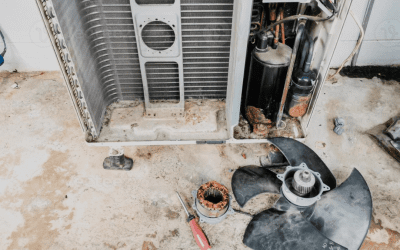Window air conditioners aren’t designed to cool your whole home. Instead, they cool a smaller space, like a single room.
In this guide, we’re going to teach you exactly how your window unit works. We’ll also give you some tips on how to shop for the perfect window unit for your home:
What is a window air conditioner?
Window air conditioners are air conditioning units that are mounted in a window. They’re designed to cool smaller spaces than central air conditioning units. Most window units are designed to cool a single room.
There are many advantages to window units. Compared to traditional air conditioners or ductless mini-split systems, window AC units are far more compact, offering all of the essential components of an air conditioner in a single unit. We’ll discuss what those components are in the next section, where we explore how these units cool your room.
How window air conditioning units work
The basic principles of a window air conditioner are the same principles that make any air conditioner work (fun fact—these are the same principles that make refrigerators work!).
- A fan pulls hot air from your home over an evaporator coil—heat from the air is drawn into the refrigerant in the coil.
- The now-cooled air is blown into your home by a fan or blower.
- The now-warm refrigerant passes through a compressor, which raises its temperature and pressure.
- This high-temperature, high-pressure refrigerant gas then passes through a condenser coil at the back of your unit. This coil releases heat into the air outside your window, condensing the gas refrigerant into a liquid.
- The now-liquid refrigerant passes through the expansion valve, which turns it back into a gas.
- The cycle repeats!
The main difference between a window air conditioner and a central air conditioner is where the parts are located. In a central air conditioner, the compressor, condenser coil, and expansion valve are all located in a unit located on your property, outside your home.
Window AC units are more compact than central AC, but this compactness comes at a cost. A window unit will be less energy efficient than central air, and its cooling capacity is greatly reduced.
Fortunately, there are plenty of ways to optimize your window unit to improve its energy efficiency!
Window units are simple machines—learn how they function so you can get more from them.
Picking the right window AC unit
Sizing
There’s a lot to think about when you’re choosing a window AC unit. First thing’s first: The size of your unit.
You might want to pick the unit that offers the most BTUs of cooling—more cooling must be better, right?
Alas, that’s not the case. You actually want a unit that’s perfectly rated to the size of the room you’re cooling. Too small, and you won’t get enough cooling; too big, and your unit will cycle on and off, reducing its lifespan.
A rule of thumb is that you want 20 BTUs of cooling for each square foot in your room. Multiply the width of your room by its length, and you’ll have your square footage. Multiply that by 20, and you’ll know how powerful you’ll need your window AC unit to be.
Most window ACs offer a minimum of 5000 BTUs. In Texas, it gets hot enough that we don’t quite follow the 20 BTU rule—we’d recommend about 25-30 per square foot. A 200-250 foot room could benefit from a 6000 BTU unit.
Things get trickier from here, though. A number of other factors, from how well shaded your room is to how high your ceilings are, can affect the size you need.
ENERGY STAR has the following recommendations:
- If the room is heavily shaded, reduce capacity by 10 percent.
- If the room is very sunny, increase capacity by 10 percent.
- If more than two people regularly occupy the room, add 600 BTUs for each additional person.
- If the unit is used in a kitchen, increase capacity by 4000 BTUs.
Cost
You might want to buy the cheapest AC unit with the BTUs you’re looking for, but we’d advise you to do a bit more research. Finding energy-efficient units (with high SEER and EER ratings and the ENERGY STAR certification) can save you money over time. You’ll lower your energy bills, and your air conditioner may last longer.
Installing your window AC unit
We don’t install window air conditioners, but you can use all of our guides to window air conditioners to learn how to install, optimize, and troubleshoot your window AC unit!
We hope this guide has helped you understand window units a little better. Stay cool!






